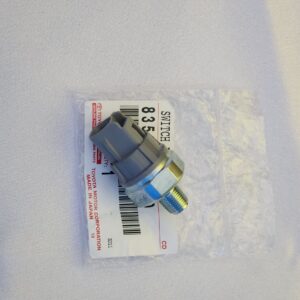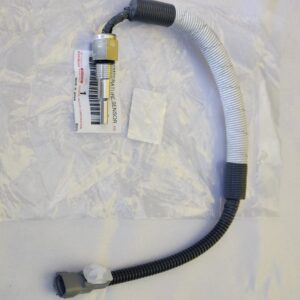The steering angle sensor (SAS) determines where the driver wants to steer, matching the steering wheel with the vehicle’s wheels. Located within the steering column, the steering angle sensor always has more than one sensor packaged together in a single unit for redundancy, accuracy, and diagnostics.
Analog sensors use voltage differences to determine information about the angle and turn direction, while digital sensors use an LED light that measures the angle of the steering input. The sensor then reads and sends a minimum of two signals, often out of phase, to the ESC module, which then uses an algorithm to make sure the steering is accurate from the steering wheel to the wheels.
The SAS also provides information on how fast the steering wheel is being turned. A steering wheel being turned quickly is normal during low vehicle speed operation buy not normal during highway speeds. If the driver is turning the wheel at a high rate while driving at highway speeds the ESC will interpret that as an indication the vehicle has lost control of its intended direction.
On vehicles with ESC and electric power steering (EPS), there may also be a steering torque sensor that detects how much force the driver is applying to the steering wheel. It works like a torsion bar as it twists very slightly as the steering wheel/steering shaft is turned by the driver.
Only 3 left in stock (can be backordered)
$47,820.22
The steering angle sensor (SAS) determines where the driver wants to steer, matching the steering wheel with the vehicle’s wheels. Located within the steering column, the steering angle sensor always has more than one sensor packaged together in a single unit for redundancy, accuracy, and diagnostics.
Analog sensors use voltage differences to determine information about the angle and turn direction, while digital sensors use an LED light that measures the angle of the steering input. The sensor then reads and sends a minimum of two signals, often out of phase, to the ESC module, which then uses an algorithm to make sure the steering is accurate from the steering wheel to the wheels.
The SAS also provides information on how fast the steering wheel is being turned. A steering wheel being turned quickly is normal during low vehicle speed operation buy not normal during highway speeds. If the driver is turning the wheel at a high rate while driving at highway speeds the ESC will interpret that as an indication the vehicle has lost control of its intended direction.
On vehicles with ESC and electric power steering (EPS), there may also be a steering torque sensor that detects how much force the driver is applying to the steering wheel. It works like a torsion bar as it twists very slightly as the steering wheel/steering shaft is turned by the driver.
| Warehouse | Inventory at warehouse 2 |
|---|


Get E-mail updates about our latest products and special offers.
Sensors and More is Jamaica’s ultimate online auto parts store. Established in 2020, we specialize in genuine electrical parts for Japanese, Read more…
Reviews
There are no reviews yet.